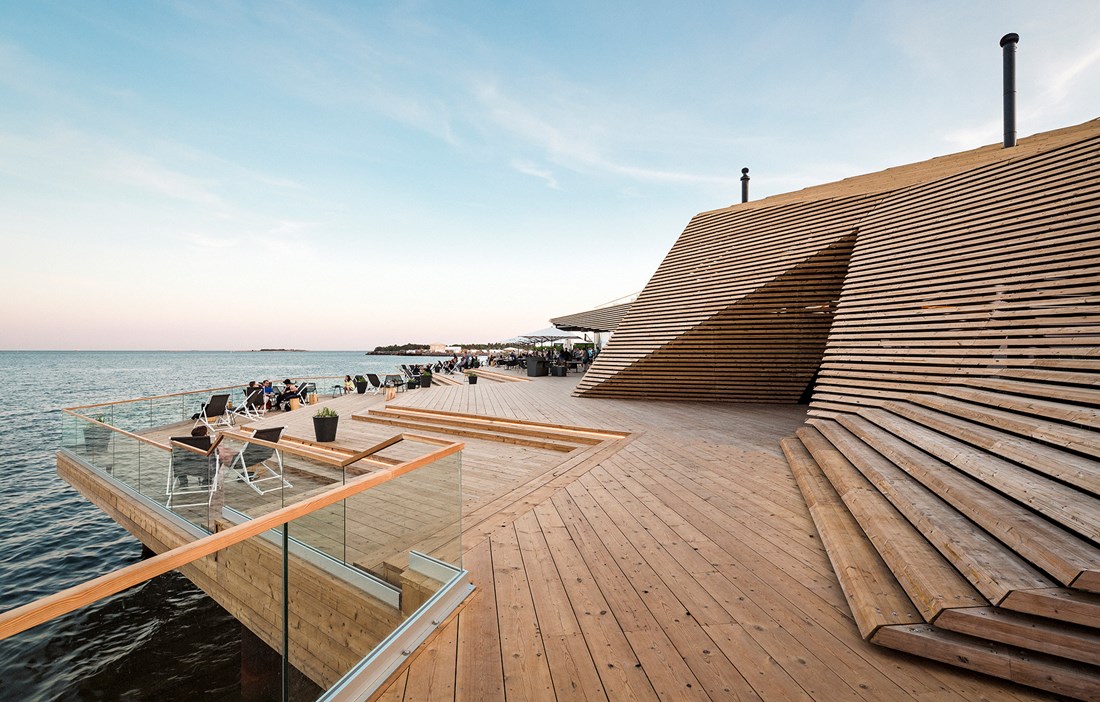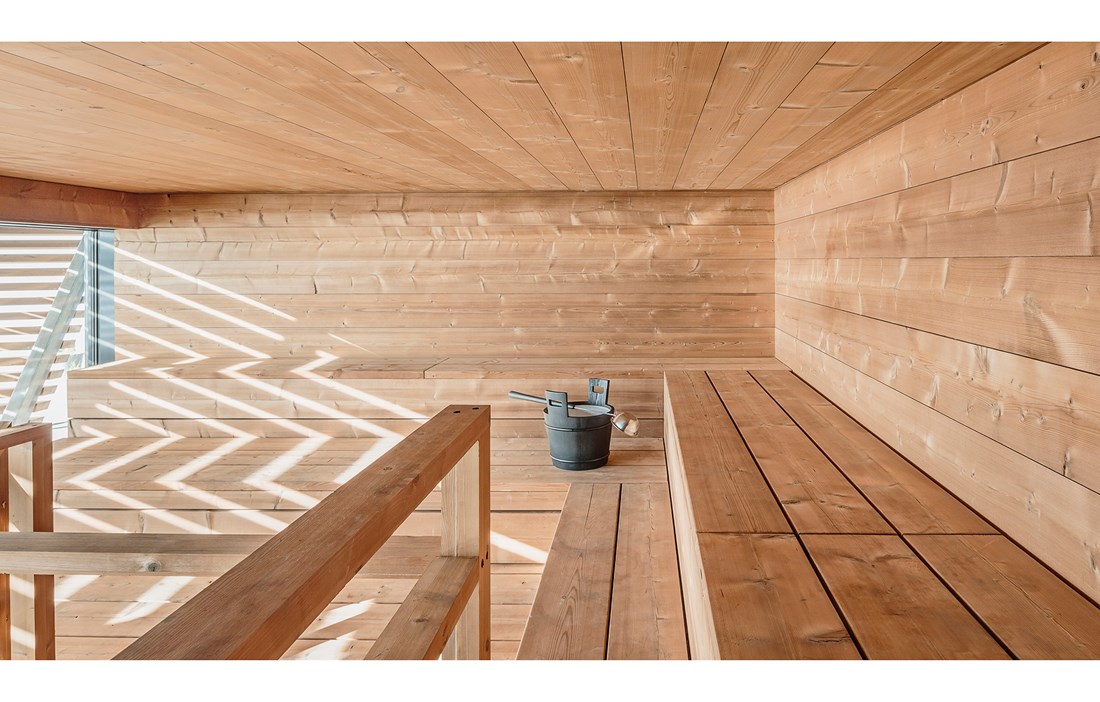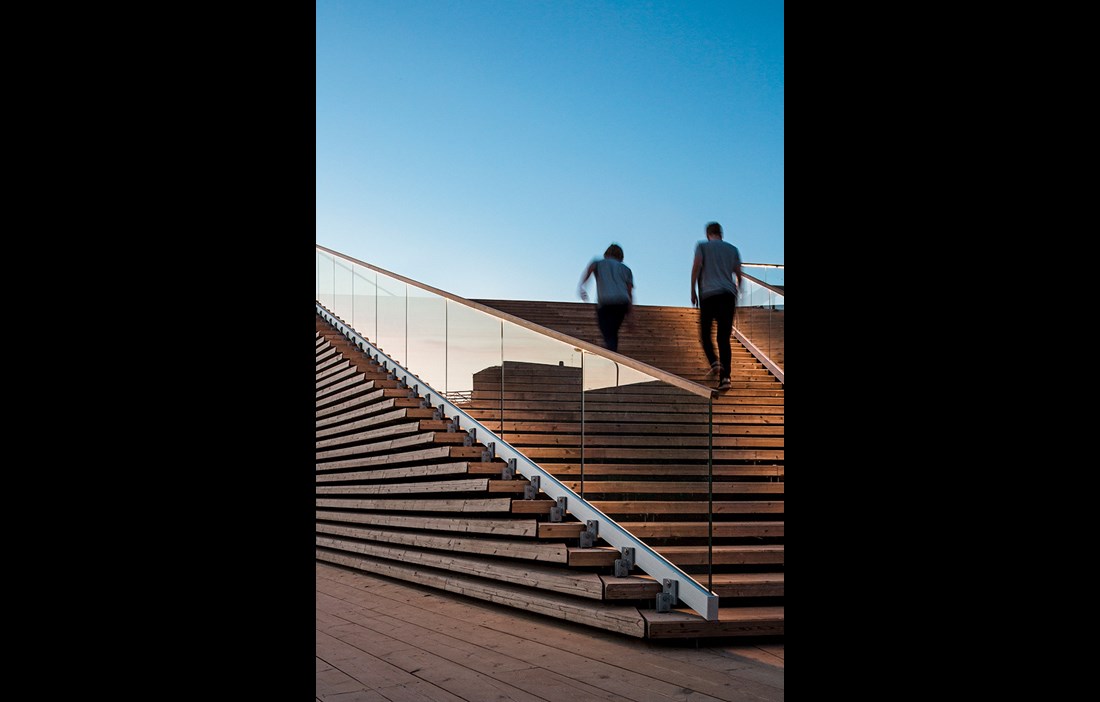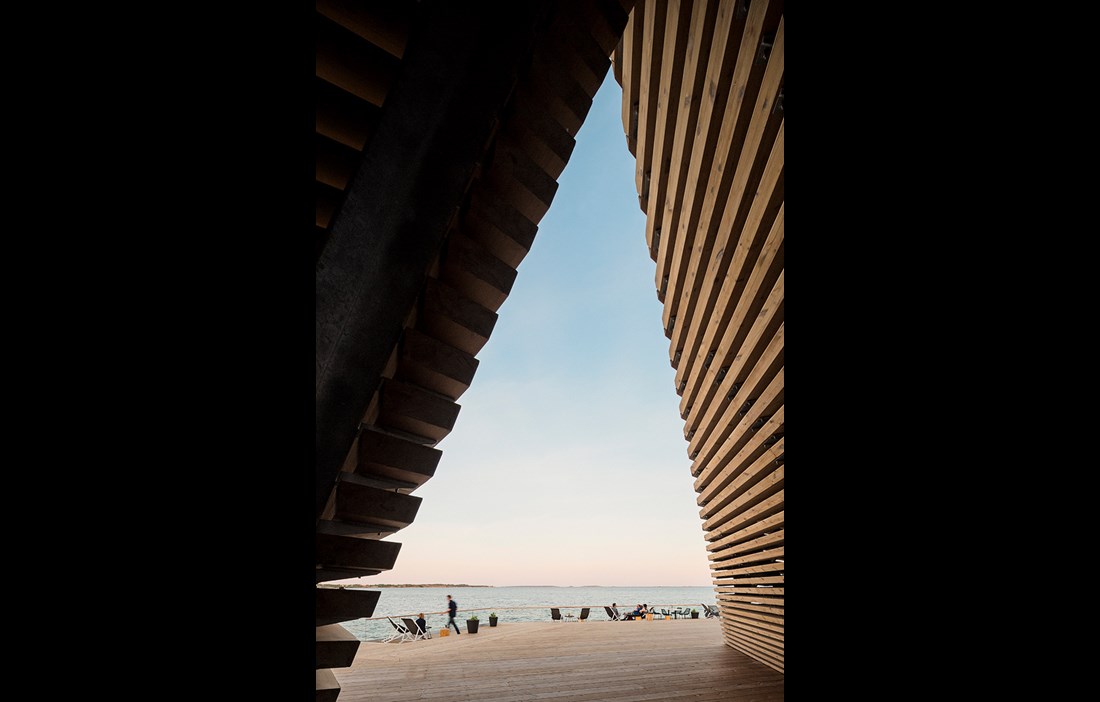Finnish sauna culture is stronger than ever. There are currently over 3 million sauna heaters for a population of around 5.4 million, which means there is one for every household on average. It is therefore only logical that the Finns also have a word for the warm, moist air currents that radiate off the heater when you pour water on the sizzling stones. And that word is “löyly”.
Now a new sauna facility called Löyly has opened just outside Helsinki. In addition to three separate sauna areas, the ambitious development of over 1,000 square metres also has a small spa and a restaurant with its own outdoor tables.
The building is part of a planned residential area along a small stretch of waterfront called Hernesaarenranta, which will link central Helsinki with the sea. The architectural practice Avanto Architects is behind the project and has created one of Helsinki’s hottest spots – quite literally.
“Löyly is a place for total relaxation, whether you’re a tourist or a Helsinki resident. Many people who come here think it’s a really exciting place,” says Anu Puustinen of Avanto Architects.
Löyly is located just two kilometres from the city centre, but it still feels relatively remote. On a raw autumn afternoon, you can sit and gaze out at the open sea and get the feeling of being somewhere in the outer archipelago. In the subdued lighting, other visitors slip quietly between the saunas, lounges, warming open fires and restaurant. Along with the interior designers at Joanna Laajisto Creative Studio, the architects have created a calm oasis within walking distance of the city. Embracing Finnish and international design for everything from the lighting to the furniture, they have come up with what they describe as “soft minimalism”.
Before the design of Löyly was finally tied down, a floating sauna had long been suggested, but with high, unpredictable Baltic waves and the formation of ice in winter the project was judged to be too risky. In the end, the decision was taken to build a low, streamlined building up on the shore instead. Ville Hara, who was responsible for the project along with Anu Puustinen, feels it was important to keep in mind the setting and the future development plans.
“We created a low, narrow building in order not to interrupt the views for the planned housing or to break up the narrow strip of coastline. Instead of a conventional building, Löyly is part of the landscape, the centre of an area in a state of change,” he says.
Although Löyly cuts a modest figure down on the Baltic waterfront, its shape and materials are inspiring. Steel, black concrete and glass work in beautiful harmony – but the main material is wood. What defines the building are the over 4,000 heat-treated panels of Laminated Veneer Lumber, made from specially cut pine veneers, which clad the whole of the building and also make up the large terrace. This grade and type of wood was chosen for its dimensional stability, even when exposed to the harsh coastal climate of Finland. However, addition precautions were also taken – the cladding is tilted so rain and meltwater run off, and in winter the terraces are closed and covered.
Avanto Architects refers to the pine cladding as Löyly’s “overcoat”, as it attractively conceals the rectangular “concrete box” that houses the sauna facilities. But the wooden façade is more than just decorative, it is also highly functional. The overcoat acts like a Venetian blind, giving privacy but letting visitors enjoy a sauna with great views of the sea and the city. The pine overcoat also creates steps in certain places where you can get up to the roof and its terraces.
Wood also sets the tone on the interior. Here walls, doors and furniture are made from a new and unique wood product by Finnish firm Nextimber.
“It’s made using surplus birch from the manufacture of plywood, which is glued and heat-treated to create an attractive new material. These pieces of birch are usually burned to create energy, but the good-looking recycled material is a perfect fit here, giving Löyly a light and vibrant colour,” says Ville Hara.
When it comes to the woods inside the saunas, choosing is something of a science in its own right. Some woods work much better than others. Many consider aspen and alder to be the very best sauna woods, for example. The main preference is for lighter woods that don’t get too warm or change colour when the heat and air humidity are constantly changing. Löyly chose heat-treated pine and spruce, as they have exactly these properties, and they don’t leech resin. But another important factor was the price.
“We needed extremely large, thick and durable planks. They also had to be easily available at a reasonable price. This is because we replace the sauna wood every two years due to its intensive use. We quickly determined that heat-treated pine and spruce met all the criteria for a good sauna wood,” says Anu Puustinen. Despite the building’s strong wooden feel, the structural frame is steel. Although Avanto Architects would very much have liked to do it all in wood, Anu Puustinen is clear that it would have been complicated.
After an intensive final push – towards the end of the project people were working around the clock – Löyly was finally completed down on the waterfront at Hernesaarenranta. The complex attracts visitors all year round. The large terraces are popular in summer, and in winter you can swim in ice holes that are sawn out next to the building. The ice holes are called “avanto” – and they thus share their name with the architectural firm that designed Löyly.
“Over time the building’s façade will change colour and turn a lovely grey. One day it will become part of the landscape and look like a flat rock on the shore of the Baltic Sea,” says Anu Puustinen.

























